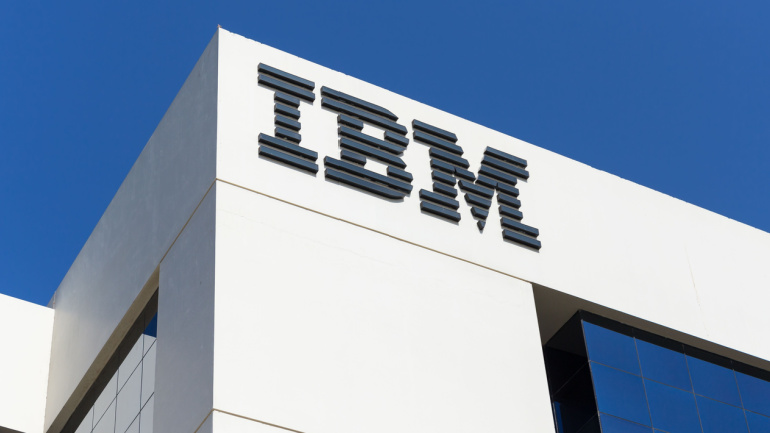The US launches Disruptive Technology Strike Force to counter foreign adversaries acquiring sensitive technology, with recent prosecutions targeting Chinese entities. The move signifies increased efforts in containing China’s influence, potentially impacting global tech firms’ strategic decisions.
Explore the thriving IT industry channel in 2023, featuring an array of technology solutions, new market players, and evolving customer habits. With a focus on customer experience and cybersecurity services, channel firms continue to adapt, maintaining profitability in a dynamic landscape.
Nord Security partners with Intelisys, enabling their community to access comprehensive cybersecurity solutions for businesses and consumers, as companies adapt to the changing landscape of network protection amid the rise in remote work.
IBM’s Quantum Safe portfolio, launched at the Think conference, addresses emerging security risks from quantum computing advancements. Offering enhanced protection against potential quantum-powered cyberattacks, this suite of tools and roadmap aims to guide organizations through the post-quantum era.
Spectrum Enterprise, a division of Charter Communications, Inc., has introduced Secure Access with Cisco Duo and Cloud Security with Cisco+ Secure Connect to its cybersecurity product portfolio. These two additions allow companies to offer safe and secure access to information and applications on private networks or public clouds to employees and other stakeholders. The new cybersecurity protections are integrated with the company’s managed network services portfolio, which includes Managed Network Edge and Enterprise Network Edge solutions. Managed Network Edge and Enterprise Network Edge are modular, all-in-one platforms that simplify the deployment and management of an organization’s network. While each platform offers slightly different features, both provide routing, SD-WAN, switching, security, remote access, and LAN options. Layering on Secure Access with Cisco Duo and Cloud Security with Cisco+ Secure Connect provides clients with the full protection of a secure access service edge (SASE). Secure Access with Cisco Duo helps protect organizations…
Zimperium, a mobile security solutions provider for endpoints and apps, has unveiled its Mobile-First Security Platform™ to provide an end-to-end mobile security platform for businesses. The platform combines Zimperium Mobile Threat Defense (MTD) and Mobile Application Protection Suite (MAPS) to provide powerful new features for teams tasked with mobile security assurance. The Zimperium Mobile-First Security Platform integrates MTD and MAPS features, allowing for centralized administration and access to device and app security via a single interface on any cloud or on-premises platform. It also provides built-in privacy protection for all devices against various mobile threats including phishing, spyware, and rogue networks. Furthermore, it offers comprehensive in-app protection to avoid reverse engineering, safeguard cryptographic keys, and build self-defending apps. The platform’s expanded mobile environment includes enterprise connections such as SIEMS, IAM, XDR, DevOps workflows, ticketing systems, GitHub actions, and fraud systems. Also, advanced threat hunting is made possible by deep forensics…
According to Cisco’s first-ever Cybersecurity Readiness Index, just 15% of global organizations are rated to have the ‘Mature’ level of preparation required to be resistant to current cybersecurity hazards. The index illustrates where organizations are succeeding in cybersecurity preparedness and where deficiencies may worsen if global business and security leaders do not act. The analysis assesses a company’s ability to sustain cybersecurity resilience in the face of new threats, and includes 19 distinct solutions across five basic pillars: identity, devices, networks, application workloads and data. In a poll of 6,700 private sector cybersecurity leaders from 27 markets, participants were questioned as to which of these technologies they had installed and the current stage of deployment. Businesses were then divided into four readiness stages: beginner, formative, progressive and mature. More than half (55%) of companies polled worldwide are in the Beginner (8%) or Formative (47%) stages of cybersecurity readiness,…
TPx, a managed services company that offers cybersecurity, managed networks and cloud communications, has added Penetration Scanning to its Security Advisory Services offering. TPx Penetration Scanning makes use of an automated scanning platform, which allows for quick turnaround times and cost-effective services. This advanced product expands on TPx’s Vulnerability Scanning, which examines network-connected devices in order to discover possible security leaks. The combination of penetration and vulnerability scanning when used jointly offers a more thorough method of risk identification and security reinforcement. TPx Vulnerability and Penetration Scan simulates hacker behavior to assist clients evaluate the probability that a criminal will be able to successfully attack a company’s weaknesses in order to obtain access to systems or secret information on the network. Scanners track a company’s risk profile in almost real-time, with the analysis being conducted as a one-time activity or on a regular basis. Rick Mace, CEO…
Following a period of public debate, the UK government has decided on new security requirements for telecom providers. It now intends to introduce the Electronic Communications (Security) Measures Regulations 2022 and an accompanying Telecommunications Security Code of Practice to Parliament before the regulations take effect. The new rules seek to better secure UK telecoms networks from cyberattacks. Once in effect, telecoms businesses will be expected to follow tight standards around network failure or the theft of sensitive data, with the regulatory agency Ofcom receiving additional powers to verify providers are adopting suitable and proportional security measures. The government declared that the new telecommunications security legislation, designed in collaboration with the National Cyber Security Centre (NCSC), will be among the toughest in the world and will provide the UK with much stronger measures. They will strengthen the UK’s cyber resilience by incorporating strong security practices into providers’ long-term investment…
ESET, a multinational cybersecurity company, has introduced a new suite of solutions for the telecom and ISP industries, with the goal of providing consumers with comprehensive protection. The newly released ESET NetProtect suite provides network operators and end users with the tools they need to battle complex and evolving mobile threats. The new ESET NetProtect can safeguard consumer devices linked to telecom and ISP networks from harmful web domains or domain risks such as malware, phishing and possibly undesirable material via mobile or fixed network connections. End users may utilize the ESET NetProtect administration interface to modify their connected devices’ ESET NetProtect settings, manage their domain whitelists and blacklists, and receive security reports. These network-level solutions do not require any software installation on end-user devices because they’re compatible with every Internet-connected device, including iOS and Android, thanks to their integration into telco and ISP network services and proven…













